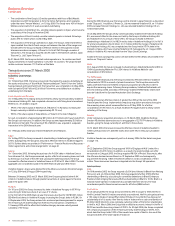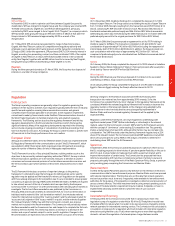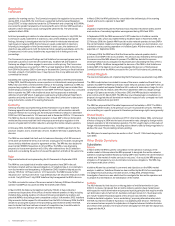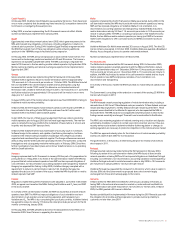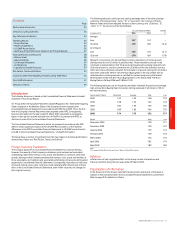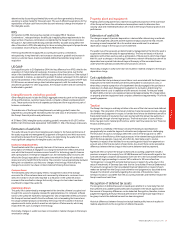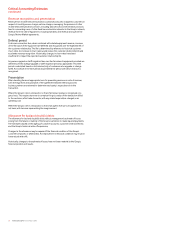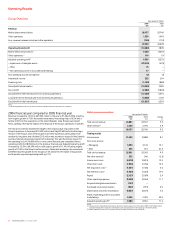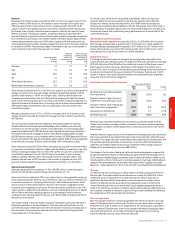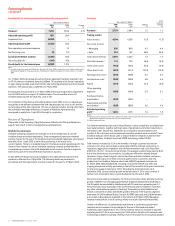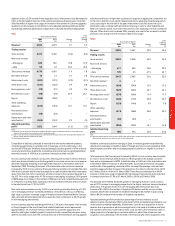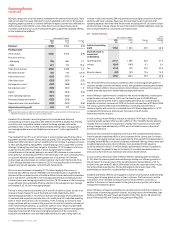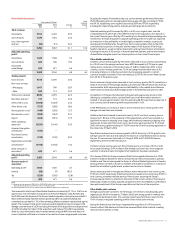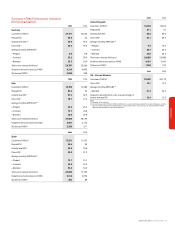Vodafone 2006 Annual Report Download - page 30
Download and view the complete annual report
Please find page 30 of the 2006 Vodafone annual report below. You can navigate through the pages in the report by either clicking on the pages listed below, or by using the keyword search tool below to find specific information within the annual report.28 Vodafone Group Plc Annual Report 2006
Critical Accounting Estimates
continued
Revenue recognition and presentation
Revenue from mobile telecommunications comprises amounts charged to customers in
respect of monthly access charges, airtime charges, messaging, the provision of other
mobile telecommunications services, including data services and information provision,
fees for connecting users of other fixed line and mobile networks to the Group’s network,
revenue from the sale of equipment, including handsets, and revenue arising from the
Group’s Partner Market agreements.
Deferral period
Customer connection fees, when combined with related equipment revenue, in excess
of the fair value of the equipment are deferred and recognised over the expected life of
the customer relationship. The life is determined by reference to historical customer
churn rates. An increase in churn rates would reduce the customer relationship life and
accelerate revenue recognition. Historically, changes in churn rates have been
insufficient to impact the expected customer relationship life.
Any excess upgrade or tariff migration fees over the fair value of equipment provided are
deferred over the average upgrade or tariff migration period as appropriate. This time
period is calculated based on historical activity of customers who upgrade or change
tariffs. An increase in the time period would extend the period over which revenue is
recognised.
Presentation
When deciding the most appropriate basis for presenting revenue or costs of revenue,
both the legal form and substance of the agreement between the Group and its
business partners are reviewed to determine each party’s respective role in the
transaction.
Where the Group’s role in a transaction is that of principal, revenue is recognised on a
gross basis. This requires turnover to comprise the gross value of the transaction billed
to the customer, after trade discounts, with any related expenditure charged as an
operating cost.
Where the Group’s role in a transaction is that of an agent, revenue is recognised on a
net basis, with turnover representing the margin earned.
Allowance for bad and doubtful debts
The allowance for bad and doubtful debts reflects management’s estimate of losses
arising from the failure or inability of the Group’s customers to make required payments.
The estimate is based on the ageing of customer accounts, customer credit worthiness
and the Group’s historical write-off experience.
Changes to the allowance may be required if the financial condition of the Group’s
customers improves or deteriorates. An improvement in financial condition may result in
lower actual write-offs.
Historically, changes to the estimate of losses have not been material to the Group’s
financial position and results.




